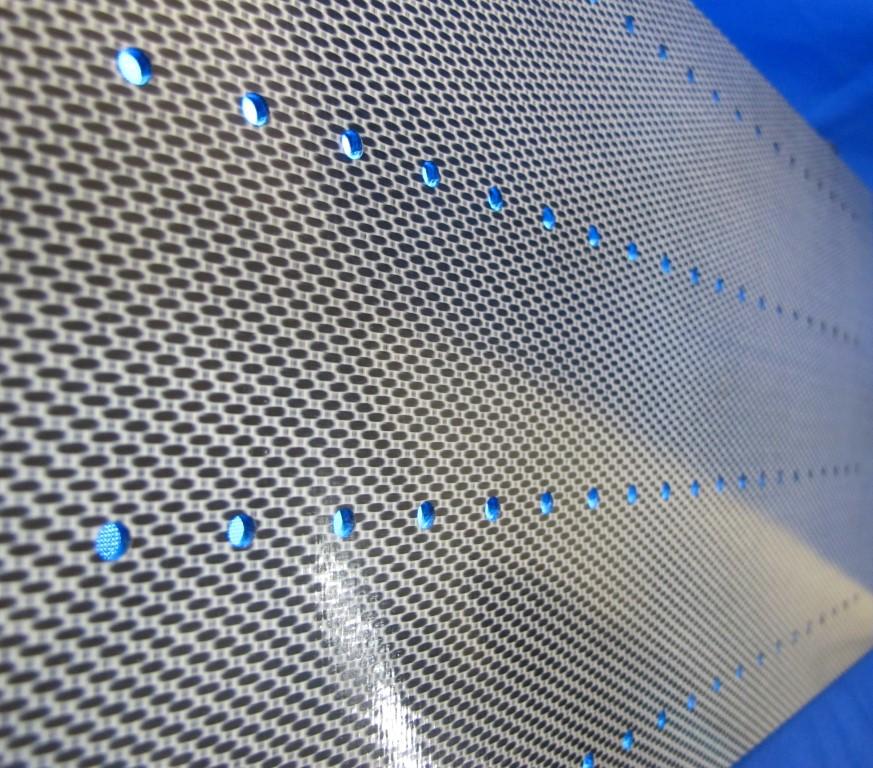Precise laser drilling of CFRP components in large quantities
In a new joint research project, four enterprises and the Laser Zentrum Hannover e.V. (LZH) aim at further developing the laser drilling of composites for series production in the aircraft industry. Their focus is on designing an efficient system and process technique that meets the demands of aviation.
Composites, such as carbon fiber reinforced plastics (CFRP), have a high potential for lightweight construction and are therefore already now widely used in aviation. These materials, however, have extraordinary properties, such as a low weight and high stability at the same time, but processing composites is quite complex. Here, mechanical processes lead to high tool wear and thus to quality problems.
Laser radiation instead of carbide drills
For aviation in particular, the drilling of CFRP has an enormous market potential. The aircraft manufacturers produce increasing quantities with a high number of drilled holes for riveted and screwed joints. This requires reliable, fast and cost-efficient processes to withstand international competition. For this purpose, laser beam drilling is an ideal alternative to conventional processes.
In the project „Laser Beam Drilling of Composites for Applications in Aviation” (LABOKOMP), the partners focus on the development of customized processing strategies using a new, high pulse laser beam source.
To design a process that suits industrial needs, a tailor-made system, handling and monitoring technique shall finally be made available to the users. Only thus, the highly precise and dynamic handling and processing of high-quality serial components can be achieved.
One clamping system for all component variants
Within the scope of the project, the small and medium-sized enterprises (SMEs) INVENT GmbH and KMS Technology Center GmbH as well as the large enterprises TRUMPF Laser GmbH and Premium AEROTEC GmbH develop automated clamping and positioning systems that include, among other things, an integrated vibration recognition and damping. Unlike conventional separation processes, a single clamping system can be used for all component variants here. To provide a comprehensive entire process, the supply and exhaust of process gases and emissions as well as the cooling of the workpieces are optimized, too.
A tailor-made laser process control for more efficiency
Investigations and material tests with the aim to minimize the thermal stress on laser-drilled CFRP components, and at the same time increasing the efficiency through a tailor-made process control – these are the work priorities of the LZH experts in the Composites Group of the Production and Systems Department. Apart from the manufacturing of small components in large quantities, the novel process strategy shall be transferred to the assembly of large structures, too, in the future.
This project is sponsored by the German Federal Ministry of Education and Research (BMBF) within the scope of the „KMU-innovativ: Photonik“ initiative for a duration of three years.
There is one figure for this press release.

